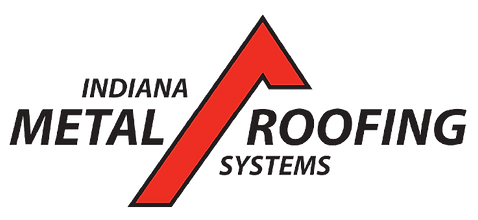What’s the Minimum Slope Required for a Metal Roof?
- Joseph Justice
- Oct 14, 2024
- 4 min read
When considering a metal roof for your home, one of the most important factors to account for is the slope or pitch. At Indiana Metal Roofing Systems, we’ve seen how the right slope can maximize the efficiency and longevity of a metal roof. Understanding the minimum slope for your roof ensures proper water runoff and reduces the risk of damage from standing water.

What Is Roof Slope?
The slope of a roof refers to the angle of the roof's surface, typically expressed as a ratio of vertical rise to horizontal distance, such as 2:12, 4:12, or 6:12. The higher the first number, the steeper the slope. Flat roofs have a very low pitch, while steeper roofs feature more pronounced angles.
Did you know that a roof with a pitch below 2:12 is generally considered a flat roof, and special care is required for proper water drainage on such roofs?
The slope is essential because it helps with the effective drainage of water and debris. A roof that is too flat may accumulate water, leading to potential leaks and damage.
Common Roof Pitches for Metal Roofs
1:12 to 2:12 – Low Slope
A roof is classified as low slope when the pitch is below 2:12. In other words, if a roof rises less than 2 vertical units (inches or feet) for every 12 horizontal units, it is considered low slope or flat. These roofs require special materials to ensure proper water runoff. For metal roofs, standing seam panels are often used for slopes as low as 1:12.
3:12 to 9:12 – Moderate Slope
The most common range for residential roofs falls between 3:12 and 9:12, which offers a good balance of aesthetic appeal and functional water runoff. Stone-coated metal shingles, which mimic the look of asphalt shingles, are particularly suited for these slopes.
Tip: If your home has a low slope, consider metal panels rather than shingles to avoid moisture buildup under the roofing material.
Why Roof Slope Matters for Metal Roofing
The slope of your metal roof is essential for several reasons:
Water Drainage: A steeper slope allows water to run off more easily, reducing the risk of leaks.
Durability: Metal roofs on low slopes may require more maintenance to prevent water pooling, which can cause corrosion or damage.
Installation Cost: Steeper roofs can increase installation costs due to the added complexity and safety measures required for workers.
Minimum Slope for Metal Roofing
Standing Seam Metal Roofs
Standing seam metal roofs can be installed on slopes as low as 1:12, making them suitable for homes with a low pitch. These roofs consist of vertical panels with interlocking seams, which help channel water off the roof effectively.
Corrugated Metal Roofs
Corrugated metal roofs are typically installed on slopes as low as 3:12. The corrugated design helps promote water drainage even with a lower pitch, but these roofs may require additional waterproofing measures for flat surfaces.
Important Fact: Corrugated metal roofs are popular for agricultural and industrial buildings, where lower slopes are common.
Stone-Coated Metal Roofs
Stone-coated metal roofs are designed to resemble traditional materials like shingles or tiles but require a steeper slope, typically no less than 4:12. This ensures proper water runoff and minimizes the risk of moisture being trapped beneath the surface.
How Slope Affects Roof Costs
The slope of your roof can affect the overall cost of installation. Steeper roofs require more labor and safety measures, which can increase the price. On the other hand, low-slope roofs may require additional materials to ensure proper waterproofing and drainage, particularly with metal roofs.
Frequently Asked Questions
What is the lowest slope for a metal roof?
The lowest slope for a standing seam metal roof is 1:12. For corrugated metal roofs, a minimum slope of 3:12 is recommended to ensure proper water drainage.
Can metal roofs be installed on flat roofs?
Technically, metal roofs can be installed on flat roofs with appropriate waterproofing materials, but it is not common. A slight slope is preferred for better water runoff.
Why do metal roofs need a minimum slope?
Metal roofs require a minimum slope to ensure water can drain effectively. Without the proper slope, water can pool, leading to leaks and damage over time.
What is the ideal slope for residential metal roofs?
Most residential metal roofs are installed on slopes ranging from 4:12 to 9:12, providing a balance between aesthetic appeal and functional water drainage.
Does roof slope affect installation costs?
Yes, steeper slopes often increase installation costs due to the added safety measures required for workers and the complexity of the installation.
Conclusion
Understanding the minimum slope for your metal roof ensures long-term durability and functionality. At Indiana Metal Roofing Systems, we specialize in installing metal roofs with the perfect pitch for each home, ensuring water runoff and protection from the elements.
With our expert team, you can rest assured that your metal roof will be installed correctly, with proper slope considerations. Our A+ BBB rating and numerous 5-star reviews show our commitment to quality and customer satisfaction.
Key Features:
Expertise in both steep and low slope metal roofing systems
High-quality materials
Industry-leading financing options
Find out how we can help you solve your roofing issues today. Schedule your inspection here.





Comments